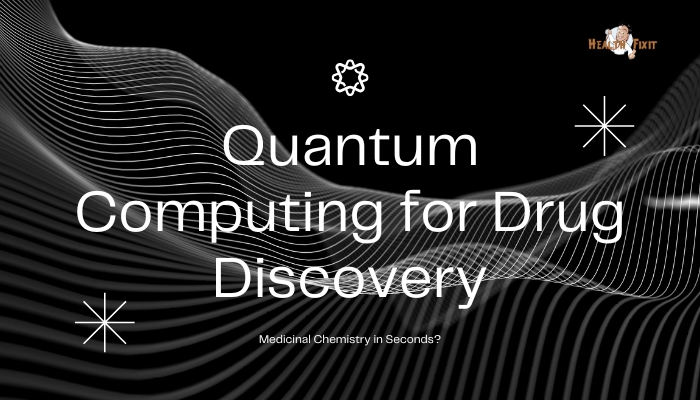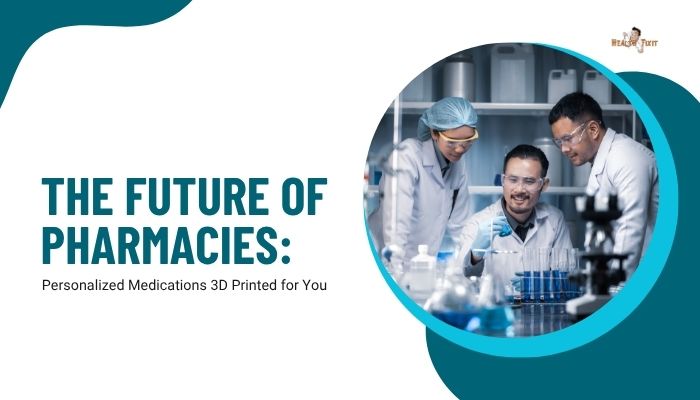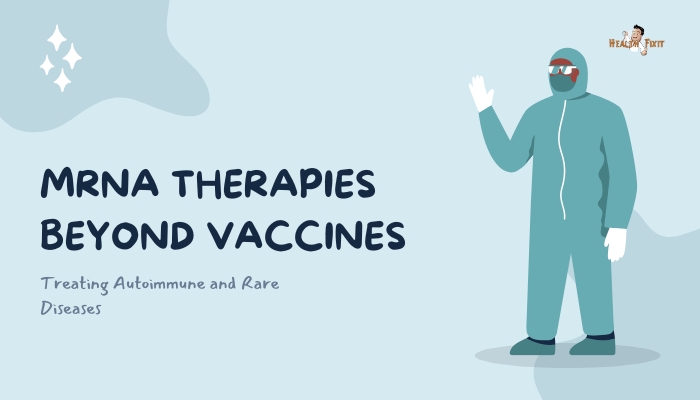Introduction
For millennia, cultures worldwide have relied on herbal remedies, acupuncture, and mind-body rituals to maintain health and treat common ailments
. Over time, these traditional practices took a backseat to pharmaceutical advances, lab-derived therapeutics, and modern surgeries. Today,
however, a growing number of patients and practitioners embrace “holistic medicine” again—this time fusing age-old wisdom with digital innovations,
wearable sensors, and evidence-based approaches. This “revival” merges the best of both worlds, aiming to treat the whole person—body, mind
, and spirit—while benefiting from the precision and rigor of modern technology. This article explores how integrative healthcare redefines ancient remedies in a high-tech context, delivering patient-centered solutions that cater to individual preferences and lifestyles.
Why Holistic Medicine Is Returning
Limitations of Conventional Care
While Western medicine excels in acute interventions—surgery, emergency care, specialized drugs—it may fall short in chronic disease management
stress-related conditions, or whole-person wellness. Patients increasingly crave personalized strategies addressing root causes, not just symptomatic relief.
Growing Evidence Base
Many once-“alternative” therapies, from acupuncture to yoga, now boast peer-reviewed studies demonstrating benefits—especially for pain, anxiety, or lifestyle-related disorders. This evidence encourages mainstream providers to integrate these modalities into care plans.
Patient Demand for Natural Options
Amid concerns about drug side effects, antibiotic resistance, or rising healthcare costs, patients look to tried-and-true traditional remedies. They also welcome approaches that support mental, emotional, and spiritual well-being alongside physical health.
Integrating Traditional Remedies with Tech
Wearables and Monitoring
Wearable devices (smartwatches, fitness trackers) can complement herbal or mind–body regimens by monitoring vitals,
sleep quality, or stress biomarkers. For instance, a patient using herbal teas for insomnia might track nightly sleep metrics to gauge effectiveness, adjusting remedies in partnership with a healthcare provider.
Telemedicine and Virtual Consultations
Remote platforms allow practitioners of ayurveda, traditional Chinese medicine (TCM), or other holistic approaches to reach patients worldwide. Secure video calls facilitate personalized regimens—nutrition
, herbal formulas, breathing exercises—backed by easy follow-up. Meanwhile, AI chatbots or apps can remind patients of daily routines or record symptom changes.
Biomarker and Genomic Insights
Functional medicine labs measure hormonal or metabolic markers to tailor nutritional guidance or herbal protocols. Meanwhile,
genomics might reveal which individuals respond best to certain adaptogenic herbs or dietary changes—making centuries-old remedies more precise. By fusing modern tests with time-honored therapy guidelines, clinicians create integrative personalized plans.
Key Areas of Holistic–High-Tech Fusion
Acupuncture and Digital Feedback
Modern clinics use electronic acupoint locators or laser acupuncture devices to enhance precision, ensuring consistent stimulation.
Some incorporate real-time data from the patient’s heart rate variability (HRV) or EEG to measure relaxation or analgesic responses, refining session protocols.
Herbal Medicine with Scientific Rigor
Traditional herbal formulas (e.g., TCM’s “Liu Wei Di Huang Wan” or Indian “Ashwagandha” blends) can be standardized for consistent active compounds,
validated by advanced phytochemical assays. Tech-driven supply chain tracking ensures authenticity and purity, verifying that the final product is free from heavy metals or contaminants.
Mind–Body Therapies with Biofeedback
Yoga, meditation, or qigong, once purely experiential, now incorporate biofeedback sensors or VR-based mindfulness programs.
By displaying real-time brainwave or respiration data, patients learn to optimize technique and track progress, leading to deeper mastery and sustained mental health benefits.
Evidence and Outcomes
Chronic Pain Management
Studies show that combining herbal analgesics (like turmeric or willow bark extracts) with targeted physiotherapy and wearable posture sensors can significantly reduce pain. Meanwhile, acupuncture, monitored via digital feedback, helps certain patients reduce analgesic intake.
Stress-Related Illnesses
Mindfulness-based stress reduction (MBSR) programs have integrated wearable HRV tracking, verifying the calmer states induced by guided meditation or breathwork
. Complementary herbal adaptogens (e.g., rhodiola, ashwagandha) also show promise in reducing stress hormone levels.
Metabolic Disorders
Combining diet changes rooted in, say, TCM or ayurvedic tradition with real-time glucose monitoring can yield improved glycemic control for diabetics. E-health platforms tailor suggestions, e.g., a daily meal plan with specific spices or herbal extracts proven beneficial in metabolic regulation.
Challenges and Considerations
Quality and Regulation
Not all herbal or alternative products meet rigorous standards. Practitioners must ensure therapies align with evidence-based best practices, verifying product safety and efficacy. Regulating bodies set guidelines, but gaps remain—particularly with global supplement markets.
Training for Healthcare Providers
Mainstream providers need additional knowledge to properly integrate TCM, ayurveda, or native healing arts
. Interdisciplinary courses, board certifications, or collaborative models help ensure informed, safe care. Equally, traditional healers might adopt updated scientific frameworks to refine practices.
Insurance Coverage
While some integrative services are covered under certain health plans, many remain out-of-pocket. Demonstrating cost-effectiveness via large clinical trials can drive insurers to expand coverage, bridging accessibility hurdles.
The Future of Holistic Medicine
Precision Integrative Health
As data from wearables and genetic tests converge, individuals could receive precisely tuned herb-based prescriptions, mind–body interventions, or recommended physical therapies. This synergy merges old healing traditions with high-tech personalization.
“Smart Clinics”
Some integrative clinics already incorporate functional diagnostics, digital symptom trackers, telehealth, herbal dispensaries, and interactive VR for stress relief in one environment. Expect expansions into larger health networks, standardizing a “digital plus holistic” care model.
Cross-Cultural Exchange
Growing collaboration between Western biomedical research and the knowledge bases of Asia, Africa, or indigenous communities fosters deeper synergy.
Partnerships accelerate understanding of how centuries-old cures can marry cutting-edge methods, forging innovative new therapies.
Practical Tips
- Choose Reputable Practitioners: For acupuncture, herbal medicine, or specialized mind–body therapies, seek licensed or certified experts with robust training and references.
- Maintain Open Communication: If mixing herbal remedies with prescribed drugs, tell your primary doctor to avoid dangerous interactions.
- Check Quality and Evidence: Evaluate product labels, third-party testing, or supportive peer-reviewed data for herbal supplements.
- Leverage Technology: Use a wearable device or health app to track daily steps, heart rate, or sleep, and share data with your integrative provider for optimal synergy.
Conclusion
Holistic medicine is experiencing a resurgence, not as a fringe alternative, but as a fully integrated partner to mainstream care
. Driven by robust scientific validation, standardization of herbal compounds, and high-tech sensors or AI, these ancient practices find new relevance in an interconnected world.
As more patients seek comprehensive, tailored solutions, bridging high-tech tools with time-tested treatments fosters improved outcomes.
This synergy might well be the blueprint for a more patient-centered, sustainable future in healthcare—one that values the best of both tradition and innovation, delivering truly holistic well-being for mind and body.
References
- Maizes V, Rakel D, Niemiec C. Integrative medicine and patient-centered care. J Ambul Care Manage. 2009;32(2):115–122.
- National Center for Complementary and Integrative Health. Complementary, Alternative, or Integrative Health: What’s In a Name? 2020.
- Kushi LH, Doyle C, et al. American Cancer Society guidelines on nutrition and physical activity for cancer prevention. CA Cancer J Clin. 2012;62(1):30–67.
- WHO. Traditional Medicine Strategy 2014–2023. Geneva: World Health Organization; 2013.
- Davis MA, West AN, Weeks WB, Sirovich B. Health behaviors and utilization among users of complementary and alternative medicine. J Am Board Fam Med. 2011;24(3):258–269.
- Eardley S, Bishop FL, et al. A systematic literature review of complementary and alternative medicine prevalence in EU. Forsch Komplementmed. 2012;19(Suppl 2):18–28.
- Sarris J, et al. Integrative mental healthcare: advanced technologies, herbal psychopharmacology, and bridging the clinical evidence gap. Aust N Z J Psychiatry. 2019;53(11):1021–1030.
- Yeh G, et al. Complementary therapies, wellness, and integrative medicine for heart failure patients. J Card Fail. 2015;21(7):505–516.
- Liu JP, et al. Chinese herbal medicines for hypertriglyceridemia. Cochrane Database Syst Rev. 2016;16(9):CD011232.
- Coulter ID, Khorsan R, Crawford C, Huenefeld M, Nelson C. Integrative health and medicine: key definitions and concepts. Glob Adv Health Med. 2017;6:2164957X17728841.







